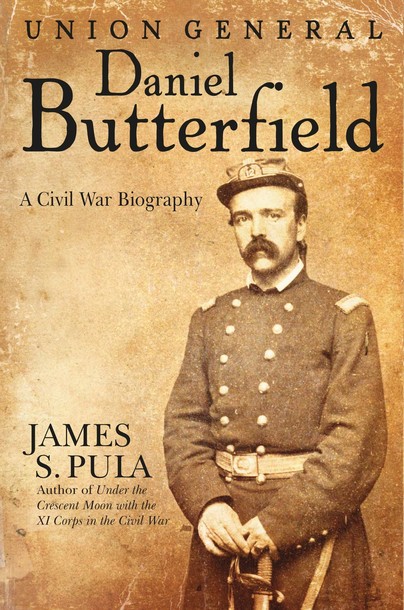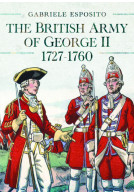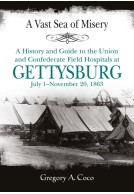Google Books previews are unavailable because you have chosen to turn off third party cookies for enhanced content. Visit our cookies page to review your cookie settings.
Union General Daniel Butterfield (Hardback)
A Civil War Biography
Imprint: Savas Beatie
Pages: 288
Illustrations: 30 images, 13 maps
ISBN: 9781611217001
Published: 25th April 2024
Pages: 288
Illustrations: 30 images, 13 maps
ISBN: 9781611217001
Published: 25th April 2024
You'll be £25.99 closer to your next £10.00 credit when you purchase Union General Daniel Butterfield. What's this?
+£4.99 UK Delivery or free UK delivery if order is over £40
(click here for international delivery rates)
Order within the next 4 hours, 9 minutes to get your order processed the next working day!
Need a currency converter? Check XE.com for live rates
(click here for international delivery rates)
Order within the next 4 hours, 9 minutes to get your order processed the next working day!
Need a currency converter? Check XE.com for live rates
Dan Butterfield played a pivotal role during the Civil War. He led troops in the field at the brigade, division, and corps level, wrote the 1862 Army field manual, composed “Taps,” and served as the chief of staff for Joe Hooker in the Army of the Potomac. He introduced a custom that remains in the U.S. Army today: the use of distinctive hat or shoulder patches to denote the unit to which a soldier belongs and was a Medal of Honor winner. Butterfield was also controversial, not well-liked, and tainted by politics. Award-winning author James S. Pula unspools fact from fiction to offer the first detailed and long overdue treatment of the man and the officer in Major General Daniel Butterfield: A Civil War Biography.Butterfield was born into a wealthy New York family whose father co-founded American Express. He was one of the war’s early volunteers, fought at First Bull Run, and made an important contribution with his Camp and Outpost Duty for Infantry (1862). He gained praise leading a brigade on the Virginia Peninsula and was wounded at Gaines’ Mill, where his heroism would earn him the Medal of Honor in 1892. It was in the solemnity of camp following the Seven Days’ Battles that he gained lasting fame for composing “Taps.” When its commander when missing, Butterfield took command of a division at Second Bull Run and did so with steadiness and intelligence. His abilities bumped him up to lead the Fifth Corps during the bloodbath at Fredericksburg, where he was charged with managing the dangerous withdrawal across the Rappahannock.Shocked and hurt when he was supplanted as the head of the Fifth Corps, he received a “second chance” when General Hooker named him chief of staff of the Army of the Potomac. In this capacity he was largely responsible for innovations such as the use of insignia to identify each corps—which he designed himself—the streamlining of the supply system, and the improvement of communications between commands. He played a pivotal role during the Chancellorsville and Gettysburg campaigns in managing logistics, communications, and movements, only to be discarded while home recuperating from a Gettysburg wound. Politics, questionable morals, and his testimony before the Committee on the Conduct of the War tainted his star. When Hooker was sent west Butterfield went along as chief of staff, earning positive comments from Hooker and Gens. George Thomas, William Tecumseh Sherman, and U. S. Grant. He led a division in the XX Corps during the Atlanta Campaign with conspicuous ability at Resaca before a recurring illness forced him from the field. Pula’s absorbing prose, meticulous research into primary source material, and even-handed treatment of this important Civil War figure will be welcomed by historians and casual readers alike. Major General Daniel Butterfield: A Civil War Biography is a study long-overdue.
Customers who bought this title also bought...
Other titles in Savas Beatie...
















